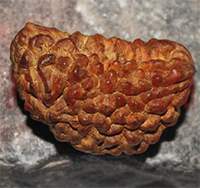Indian Astrology- Know about your Indian Astrology

Key Components of Indian Astrology
Indian astrology, also known as Vedic astrology or Jyotish, is an ancient and intricate system of divination originating from the Vedas, the ancient Hindu scriptures. Unlike Western astrology, Indian astrology is based on the sidereal zodiac, which considers the fixed position of stars and constellations rather than aligning with the Earth's seasons. It aims to provide insight into various aspects of life, including personality, career, relationships, health, and spiritual growth.
Indian astrology is primarily used for guidance in various life matters, including career choices, marriage compatibility, health concerns, financial success, and spiritual practices. It also provides insights into a person's karma and potential challenges or blessings in life. Many people consult Vedic astrology for favorable times (muhurtas) for important activities like marriage, business ventures, and travel.
Components of Indian Astrology
The Zodiac Signs (Rashis)
There are 12 zodiac signs in Indian astrology, called Rashis. Each sign has specific traits and is associated with a ruling planet:
Mesha (Aries)
Vrishabha (Taurus)
Mithuna (Gemini)
Karka (Cancer)
Simha (Leo)
Kanya (Virgo)
Tula (Libra)
Vrishchika (Scorpio)
Dhanu (Sagittarius)
Makara (Capricorn)
Kumbha (Aquarius)
Meena (Pisces)
The Planets (Grahas)
In Vedic astrology, nine planets are considered significant. These include the seven visible planets
Sun (Surya),
Role: Represents the soul, ego, vitality, leadership, and authority.
Characteristics: Symbolizes father figures, health, and one's inner self.
Ruling Sign: Leo (Simha)
Day: Sunday
Moon (Chandra),
Role: Governs emotions, mind, intuition, and maternal energy.
Characteristics: Represents mental well-being, mood, memory, and relationships with the mother.
Ruling Sign: Cancer (Karka)
Day: Monday
Mars (Mangal),
Role: Represents courage, energy, aggression, and determination.
Characteristics: Symbolizes siblings, ambition, physical strength, and vitality.
Ruling Signs: Aries (Mesha) and Scorpio (Vrishchika)
Day: Tuesday
Mercury (Bhudh),
Role: Governs communication, intellect, and analytical skills.
Characteristics: Represents intelligence, wit, learning, and business acumen.
Ruling Signs: Gemini (Mithuna) and Virgo (Kanya)
Day: Wednesday
Jupiter (Brihaspati),
Role: Signifies wisdom, spirituality, higher education, and prosperity.
Characteristics: Represents teachers, mentors, morality, growth, and fortune.
Ruling Signs: Sagittarius (Dhanu) and Pisces (Meena)
Day: Thursday
Venus (Shukra),
Role: Represents love, beauty, art, comfort, and pleasure.
Characteristics: Governs relationships, material pleasures, creativity, and femininity.
Ruling Signs: Taurus (Vrishabha) and Libra (Tula)
Day: Friday
Saturn (Shani)
Role: Governs discipline, hard work, responsibilities, and challenges.
Characteristics: Represents karma, delays, perseverance, and endurance.
Ruling Signs: Capricorn (Makara) and Aquarius (Kumbha)
Day: Saturday
and two shadow planets
Rahu,
Role: A shadow planet that represents material desires, illusion, and sudden changes.
Characteristics: Linked with worldly ambitions, obsessions, and unorthodox approaches.
Ruling Influence: No fixed sign, associated with mystery and transformation.
Ketu
Role: A shadow planet symbolizing spirituality, detachment, and past karmas.
Characteristics: Represents intuition, mystical insights, and spiritual liberation.
Ruling Influence: No fixed sign, often associated with selflessness and introspection.
which represent the lunar nodes. Each planet is associated with specific traits and influences various aspects of life.
The Houses (Bhavas)
The astrological chart in Indian astrology is divided into 12 houses, called Bhavas, each representing a different aspect of life. These houses are similar to the Western astrological houses but are divided differently due to the sidereal system. Each house reflects different areas such as self, wealth, family, relationships, career, and spiritual growth.
1. First House (Lagna or Ascendant) - House of Self
Represents: Physical appearance, personality, health, character, and overall life direction.
Significance: Determines how the individual is perceived and their approach to life.
2. Second House House of Wealth and Family
Represents: Wealth, material possessions, speech, family values, and early upbringing.
Significance: Indicates financial status, family life, and communication style.
3. Third House House of Siblings and Courage
Represents: Siblings, courage, communication, short journeys, and mental strength.
Significance: Reflects one's communication skills, bravery, and relationships with siblings.
4. Fourth House House of Home and Happiness
Represents: Mother, home environment, property, comforts, and emotional foundation.
Significance: Associated with one's emotional well-being, real estate, and relationship with the mother.
5. Fifth House House of Creativity and Children
Represents: Creativity, intelligence, children, romance, education, and speculative gains.
Significance: Indicates one’s creative pursuits, romantic life, intellectual abilities, and relationship with children.
6. Sixth House House of Health and Service
Represents: Health, enemies, daily work, service, debts, and obstacles.
Significance: Shows health issues, challenges, debts, and one's attitude towards work and service.
7. Seventh House House of Partnerships and Marriage
Represents: Spouse, marriage, partnerships, contracts, and public relations.
Significance: Reflects marriage, long-term partnerships, and the nature of interpersonal relationships.
8. Eighth House House of Transformation and Mysteries
Represents: Death, transformation, inheritance, occult, hidden aspects, and longevity.
Significance: Associated with sudden changes, mysteries, spirituality, and financial matters related to others.
9. Ninth House House of Dharma and Fortune
Represents: Religion, spirituality, higher learning, travel, luck, and morals.
Significance: Indicates belief systems, spirituality, philosophical outlook, and fortune.
10. Tenth House House of Career and Public Life
Represents: Career, social status, public image, ambition, and authority.
Significance: Shows one’s professional life, career aspirations, reputation, and achievements.
11. Eleventh House House of Gains and Social Circles
Represents: Friendships, income, gains, social network, and fulfillment of desires.
Significance: Indicates income sources, support from friends, and fulfillment of dreams.
12. Twelfth House House of Losses and Liberation
Represents: Losses, expenses, spirituality, isolation, and foreign connections.
Significance: Associated with spirituality, solitude, foreign travel, and the release from worldly attachments.
The Nakshatras (Lunar Mansions)
The zodiac is further divided into 27 Nakshatras, or lunar mansions, each covering 13°20′. The Nakshatras add depth to the analysis, as they provide additional insights into personality, emotions, and destiny. Each Nakshatra has a ruling deity and planet and has specific characteristics associated with it. 1 Aswini; 2 Bharani; 3 Krittika; 4 Rohini; 5 Mrigashira; 6 Aridra; 7 Punarvasu; 8 Pushya; 9 Aslesha: 10 Magha; 11 Purvaphalguni; 12 Uttaraphalguni; 13 Hasta; 14 Chitra; 15 Swati; 16 Vishakha; 17 Anuradha; 18 Jyestha; 19 Moola; 20 Purvashadha; 21 Uttarashadha; 22 Sravana; 23 Dhanishta; 24 Satabhisha; 25 Purvabhadrapada; 26 Uttarabhadrapada; 27 Revati.
Planetary Periods (Dashas)
The Dasha system in Indian astrology divides an individual’s life into planetary periods, which are ruled by different planets. The most widely used Dasha system is the Vimshottari Dasha, which divides life into 120 years of planetary influence. This system allows astrologers to predict life events based on which planet is governing a particular period.
Aspects (Drishti)
In Indian astrology, aspects refer to the influence a planet has on other planets or houses. Planets "cast their sight" (Drishti) on other houses or planets in specific ways. For example, Mars, Jupiter, and Saturn have unique aspects beyond their placement, while other planets usually aspect the 7th house from their position.
Ascendant (Lagna)
The ascendant, or rising sign, is the zodiac sign rising on the eastern horizon at the time of birth. This sign and its associated planet have a crucial influence on the person’s overall chart and life, as it determines the placement of houses and serves as the starting point for analyzing the horoscope.
The Constituent Elements of Indian Astrology
Each component above plays a specific role in interpreting the astrological chart, and they work together to form a cohesive picture of an individual's life and potential. Here’s how they combine:
Chart Formation: An individual’s Kundli or horoscope is drawn based on the date, time, and place of birth.
Planets and Rashis in Houses: Each planet and sign placed in different houses provides insights into various life areas like health, wealth, relationships, and career.
Dasha Timing: The Dasha system shows which planetary influences will be strong during specific periods, helping predict future events and transitions.
Nakshatra Influence: Nakshatras add further detail, influencing personality traits, strengths, and karmic tendencies.
Indian astrology is primarily used for guidance in various life matters, including career choices, marriage compatibility, health concerns, financial success, and spiritual practices. It also provides insights into a person's karma and potential challenges or blessings in life. Many people consult Vedic astrology for favorable times (muhurtas) for important activities like marriage, business ventures, and travel.
Components of Indian Astrology
The Zodiac Signs (Rashis)
There are 12 zodiac signs in Indian astrology, called Rashis. Each sign has specific traits and is associated with a ruling planet:
Mesha (Aries)
Vrishabha (Taurus)
Mithuna (Gemini)
Karka (Cancer)
Simha (Leo)
Kanya (Virgo)
Tula (Libra)
Vrishchika (Scorpio)
Dhanu (Sagittarius)
Makara (Capricorn)
Kumbha (Aquarius)
Meena (Pisces)
The Planets (Grahas)
In Vedic astrology, nine planets are considered significant. These include the seven visible planets
Sun (Surya),
Role: Represents the soul, ego, vitality, leadership, and authority.
Characteristics: Symbolizes father figures, health, and one's inner self.
Ruling Sign: Leo (Simha)
Day: Sunday
Moon (Chandra),
Role: Governs emotions, mind, intuition, and maternal energy.
Characteristics: Represents mental well-being, mood, memory, and relationships with the mother.
Ruling Sign: Cancer (Karka)
Day: Monday
Mars (Mangal),
Role: Represents courage, energy, aggression, and determination.
Characteristics: Symbolizes siblings, ambition, physical strength, and vitality.
Ruling Signs: Aries (Mesha) and Scorpio (Vrishchika)
Day: Tuesday
Mercury (Bhudh),
Role: Governs communication, intellect, and analytical skills.
Characteristics: Represents intelligence, wit, learning, and business acumen.
Ruling Signs: Gemini (Mithuna) and Virgo (Kanya)
Day: Wednesday
Jupiter (Brihaspati),
Role: Signifies wisdom, spirituality, higher education, and prosperity.
Characteristics: Represents teachers, mentors, morality, growth, and fortune.
Ruling Signs: Sagittarius (Dhanu) and Pisces (Meena)
Day: Thursday
Venus (Shukra),
Role: Represents love, beauty, art, comfort, and pleasure.
Characteristics: Governs relationships, material pleasures, creativity, and femininity.
Ruling Signs: Taurus (Vrishabha) and Libra (Tula)
Day: Friday
Saturn (Shani)
Role: Governs discipline, hard work, responsibilities, and challenges.
Characteristics: Represents karma, delays, perseverance, and endurance.
Ruling Signs: Capricorn (Makara) and Aquarius (Kumbha)
Day: Saturday
and two shadow planets
Rahu,
Role: A shadow planet that represents material desires, illusion, and sudden changes.
Characteristics: Linked with worldly ambitions, obsessions, and unorthodox approaches.
Ruling Influence: No fixed sign, associated with mystery and transformation.
Ketu
Role: A shadow planet symbolizing spirituality, detachment, and past karmas.
Characteristics: Represents intuition, mystical insights, and spiritual liberation.
Ruling Influence: No fixed sign, often associated with selflessness and introspection.
which represent the lunar nodes. Each planet is associated with specific traits and influences various aspects of life.
The Houses (Bhavas)
The astrological chart in Indian astrology is divided into 12 houses, called Bhavas, each representing a different aspect of life. These houses are similar to the Western astrological houses but are divided differently due to the sidereal system. Each house reflects different areas such as self, wealth, family, relationships, career, and spiritual growth.
1. First House (Lagna or Ascendant) - House of Self
Represents: Physical appearance, personality, health, character, and overall life direction.
Significance: Determines how the individual is perceived and their approach to life.
2. Second House House of Wealth and Family
Represents: Wealth, material possessions, speech, family values, and early upbringing.
Significance: Indicates financial status, family life, and communication style.
3. Third House House of Siblings and Courage
Represents: Siblings, courage, communication, short journeys, and mental strength.
Significance: Reflects one's communication skills, bravery, and relationships with siblings.
4. Fourth House House of Home and Happiness
Represents: Mother, home environment, property, comforts, and emotional foundation.
Significance: Associated with one's emotional well-being, real estate, and relationship with the mother.
5. Fifth House House of Creativity and Children
Represents: Creativity, intelligence, children, romance, education, and speculative gains.
Significance: Indicates one’s creative pursuits, romantic life, intellectual abilities, and relationship with children.
6. Sixth House House of Health and Service
Represents: Health, enemies, daily work, service, debts, and obstacles.
Significance: Shows health issues, challenges, debts, and one's attitude towards work and service.
7. Seventh House House of Partnerships and Marriage
Represents: Spouse, marriage, partnerships, contracts, and public relations.
Significance: Reflects marriage, long-term partnerships, and the nature of interpersonal relationships.
8. Eighth House House of Transformation and Mysteries
Represents: Death, transformation, inheritance, occult, hidden aspects, and longevity.
Significance: Associated with sudden changes, mysteries, spirituality, and financial matters related to others.
9. Ninth House House of Dharma and Fortune
Represents: Religion, spirituality, higher learning, travel, luck, and morals.
Significance: Indicates belief systems, spirituality, philosophical outlook, and fortune.
10. Tenth House House of Career and Public Life
Represents: Career, social status, public image, ambition, and authority.
Significance: Shows one’s professional life, career aspirations, reputation, and achievements.
11. Eleventh House House of Gains and Social Circles
Represents: Friendships, income, gains, social network, and fulfillment of desires.
Significance: Indicates income sources, support from friends, and fulfillment of dreams.
12. Twelfth House House of Losses and Liberation
Represents: Losses, expenses, spirituality, isolation, and foreign connections.
Significance: Associated with spirituality, solitude, foreign travel, and the release from worldly attachments.
The Nakshatras (Lunar Mansions)
The zodiac is further divided into 27 Nakshatras, or lunar mansions, each covering 13°20′. The Nakshatras add depth to the analysis, as they provide additional insights into personality, emotions, and destiny. Each Nakshatra has a ruling deity and planet and has specific characteristics associated with it. 1 Aswini; 2 Bharani; 3 Krittika; 4 Rohini; 5 Mrigashira; 6 Aridra; 7 Punarvasu; 8 Pushya; 9 Aslesha: 10 Magha; 11 Purvaphalguni; 12 Uttaraphalguni; 13 Hasta; 14 Chitra; 15 Swati; 16 Vishakha; 17 Anuradha; 18 Jyestha; 19 Moola; 20 Purvashadha; 21 Uttarashadha; 22 Sravana; 23 Dhanishta; 24 Satabhisha; 25 Purvabhadrapada; 26 Uttarabhadrapada; 27 Revati.
Planetary Periods (Dashas)
The Dasha system in Indian astrology divides an individual’s life into planetary periods, which are ruled by different planets. The most widely used Dasha system is the Vimshottari Dasha, which divides life into 120 years of planetary influence. This system allows astrologers to predict life events based on which planet is governing a particular period.
Aspects (Drishti)
In Indian astrology, aspects refer to the influence a planet has on other planets or houses. Planets "cast their sight" (Drishti) on other houses or planets in specific ways. For example, Mars, Jupiter, and Saturn have unique aspects beyond their placement, while other planets usually aspect the 7th house from their position.
Ascendant (Lagna)
The ascendant, or rising sign, is the zodiac sign rising on the eastern horizon at the time of birth. This sign and its associated planet have a crucial influence on the person’s overall chart and life, as it determines the placement of houses and serves as the starting point for analyzing the horoscope.
The Constituent Elements of Indian Astrology
Each component above plays a specific role in interpreting the astrological chart, and they work together to form a cohesive picture of an individual's life and potential. Here’s how they combine:
Chart Formation: An individual’s Kundli or horoscope is drawn based on the date, time, and place of birth.
Planets and Rashis in Houses: Each planet and sign placed in different houses provides insights into various life areas like health, wealth, relationships, and career.
Dasha Timing: The Dasha system shows which planetary influences will be strong during specific periods, helping predict future events and transitions.
Nakshatra Influence: Nakshatras add further detail, influencing personality traits, strengths, and karmic tendencies.
Houses in Indian Astrology
Rudraksh Beads
Find the bestseller in Rudraksh Beads .
Rudraksh Pendants & Malas
Find the bestseller Rudraksh Pendants and Malas .
Rudraksh & Yantra Pendants
Find the bestseller Rudraksh & Yantra Pendants .
Rudraksh & Gems Pendants
Find the bestseller Rudraksh & Gems Pendants .
























































































